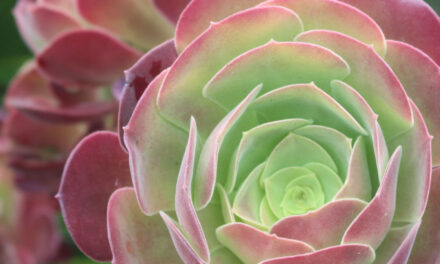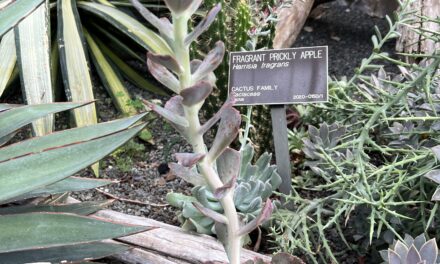
If you’re looking for a cartoonish cactus that resembles bunny ears – or the ever-popular Mickey Mouse – look no further than the Bunny Ear Cactus. The spines of each pad even give the “bunny ears” a polka dot appearance. Coupled with easy care, the Bunny Ear Cactus is a wonderful addition to any home garden.
Bunny Ear Cactus Characteristics
The Bunny Ear Cactus has numerous characteristics that make it a unique cactus variety. Here are some facts that you may or may not know:
- The Bunny Ear Cactus is native to Mexico.
- Flowers on the Bunny Ear Cactus are rare but possible. Flowers are usually yellow but can have some red. The cactus will bear fruit after it flowers.
- Bunny Ear Cacti grow in dense clumps and in pairs. If planted outdoors, you will see that the Bunny Ear Cactus grows into a dense shrub.
- Pads can be straight or wavy, depending on the variety.
Light Requirements
You cannot give your Bunny Ear Cactus too much sunlight.
Put your Bunny Ear Cactus in a well-lit place in your home. Bunny Ear Cacti grow best when the cactus gets 14-16 hours a day of sunlight. You’ll want to choose a window that gets both morning and afternoon sunlight.
Water Requirements
Bunny Ear Cacti do not need daily waterings and are generally easy to care for.
As a general practice, you should water your Bunny Ear Cactus once a week between March and October when it is actively growing.
Bunny Ear Cacti go dormant from October to March, so the cactus does not need as much water. Only water when the soil is dry, which can be every 2 to 4 weeks.
Watering less than you might assume will help prevent root rot, which the Bunny Ear Cactus is prone to. A well-draining soil that is designed for cacti will help ensure that you do not overwater your Bunny Ear Cactus.
Are Bunny Ear Cacti Illegal?
In some states in the United States, Bunny Ear Cacti are illegal.
Bunny Ear Cacti are cute and showy, but they are also an invasive, non-native species in the United States. This means that the following can be illegal:
- Owning
- Transporting
- Propagating to make more
The Bunny Ear Cactus is invasive, which means that it poses an environmental threat, even though you like the addition to your garden.
Other problems that arise from planting Bunny Ear Cacti are:
- The potential to drive native plants and animals out of their habitats
- That the spines on the pads of the plants can fall and injure people or animals, especially small animals
- The limitation of space for activity where the cactus is growing
Can A Bunny Ear Cactus Survive The Winter?
Bunny Ear Cacti cannot survive the winter or colder temperatures.
The Bunny Ear Cactus is native to warm climates like Mexico – and even the deserts of Arizona. This means that the Bunny Ear Cactus is not hardy against cold temperatures.
Any temperatures under freezing could seriously damage or kill your Bunny Ear Cactus.
If you live in a colder climate, you should try to only plant Bunny Ear Cacti in pots so you can bring them inside during the colder months.
While freezing temperatures will certainly damage your Bunny Ear Cactus, you should do your best to not leave your cactus outside in temperatures colder than even 50 degrees.
Can You Touch Bunny Ear Cacti?
You should not touch Bunny Ear Cacti.
Though beautiful, the Bunny Ear Cactus is better to look at than to touch.
At the end of the day, the Bunny Ear Cactus is still a cactus. The spines that look like polka dots on the pads are still spines and will stick to skin or clothes that it touches.
The spines are not very sharp, but they are extremely dense. Unlike other varieties of cacti, you will end up with dozens of spines rather than simply one or two.
Why Is My Bunny Ear Cactus Flopping Over?
Your Bunny Ear Cactus will begin to flop over when you are overwatering it.
Succulents and cacti are a learning curve for some new gardeners because they need to be watered so little compared to other kinds of plants.
It is easy to overwater cacti, so when you see that your Bunny Ear Cactus is flopping over, you will know that you need to let it dry out between waterings.
Here are a few things you can do to prevent overwatering:
- Water your Bunny Ear Cactus only when the soil feels try.
- Water deeply when you water your cactus, allowing water to soak into the soil.
- Use a light, well-draining soil that lets water escape.
- Use a terra cotta pot rather than a pot made of plastic or glass.
Conversely, flopping with shriveling could mean that your Bunny Ear Cactus is underwatered. It is a delicate balance that you will learn with time!
How To Propagate A Bunny Ear Cactus
The Bunny Ear Cactus is one of the easier cacti varieties to propagate.
For this plant, all you need to do is break off one of the pads for propagation. The best time for propagation of the Bunny Ear Cactus is in the spring. In fact, the hotter the weather the better for propagation.
Simply root the pad into well-draining soil and allow it to grow.
Bunny Ear Cacti can also propagate on their own in gardens either inside or outside.
Cactus pads that fall naturally instead of being cut away can also cause more Bunny Ear Cacti to grow. These pads can also travel by:
- Air
- Water
- Animals, if the pads get stuck
- People moving or disposing of garden weeds




